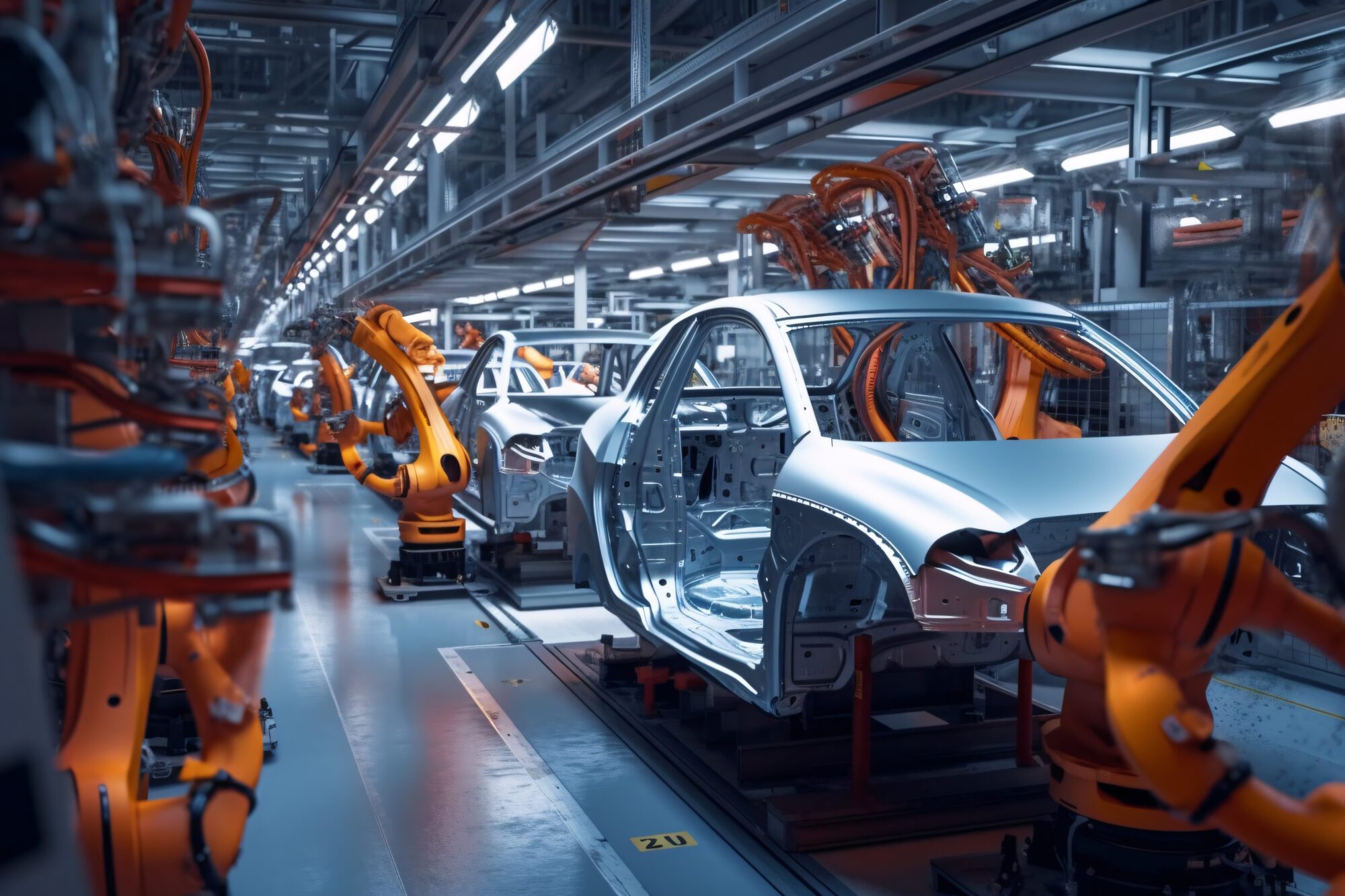Augmented Reality (AR) is making a significant impact on the automotive industry, revolutionizing the way vehicles are manufactured. By integrating digital information and virtual overlays into the real-world manufacturing environment, AR technology is unlocking new possibilities and transforming traditional production processes.
Challenges of the automotive industry
Today’s world is dynamic and poses multiple challenges to companies striving to remain competitive. Some of the challenges include:
Evolving customer demands
The automotive industry faces the challenge of continuously meeting evolving customer demands. Consumers are seeking vehicles with advanced features, personalized experiences, and sustainable options. Manufacturers need to keep up with these demands while ensuring product quality, safety, and compliance with regulations. Additionally, global market dynamics, economic fluctuations, and changing consumer preferences add complexity to the industry.
Complex supply chains
Automotive manufacturing involves complex global supply chains with multiple tiers of suppliers. Managing and coordinating the production and delivery of various components and parts from different suppliers can be challenging. Supply chain disruptions, such as delays, shortages, or quality issues, can significantly impact production schedules, cost-efficiency, and customer satisfaction.
Quality control and safety
Maintaining high-quality standards and ensuring safety is crucial in the automotive industry. The complexity of modern vehicles, with numerous components and advanced technologies, poses challenges for quality control and safety assurance. Manufacturers must implement rigorous inspection processes, comply with safety regulations, and address potential quality issues promptly to maintain customer trust and brand reputation.
Benefits of augmented reality for automotive
The use of AR in automotive manufacturing offers numerous advantages, fostering industrial operations. Benefits of augmented reality for automotive include:
Streamlining production processes
AR technology is streamlining production processes in automotive manufacturing by providing real-time guidance and assistance to assembly line workers. With the help of AR overlays and digital instructions, workers can access relevant information, such as assembly steps, component specifications, and safety guidelines, directly in their field of view. This eliminates the need for traditional paper-based manuals and minimizes the risk of errors or delays. AR can also facilitate precise alignment of parts, ensuring accurate assembly and reducing rework. By streamlining production processes, AR enhances efficiency, productivity, and overall throughput in automotive manufacturing.
Enhancing quality control
One of the key applications of AR in automotive manufacturing is enhancing quality control processes. AR enables technicians to perform visual inspections using digital overlays, allowing them to identify and highlight potential defects or anomalies in real-time. By overlaying digital information onto physical components, AR technology assists in detecting imperfections that may not be visible to the naked eye. This helps in identifying quality issues early in the production process, enabling immediate corrective actions and preventing the shipment of faulty components. The use of AR for quality control improves the overall product quality, reduces the risk of recalls or warranty claims, and enhances customer satisfaction.
Supply chain management
Augmented reality in automotive industry can enhance supply chain management by providing real-time visibility and collaboration across suppliers. With AR-enabled applications, manufacturers can track the movement of components, monitor inventory levels, and optimize logistics. AR overlays can also provide assembly instructions, part identification, and quality control guidelines to suppliers, ensuring consistency and accuracy throughout the supply chain.
Improving efficiency and cost-effectiveness
AR technology plays a crucial role in improving efficiency and cost-effectiveness in automotive manufacturing. By leveraging AR for training purposes, assembly line workers can quickly learn complex assembly procedures and become proficient in their tasks. Virtual overlays and interactive simulations provide a hands-on learning experience, reducing the learning curve and accelerating the onboarding process for new employees. Additionally, AR enables remote collaboration and support, allowing experts to provide real-time guidance to workers on the factory floor. This minimizes the need for travel and on-site assistance, resulting in significant cost savings and increased operational efficiency.
Ensuring worker safety
Another significant advantage of using augmented reality in automotive manufacturing is the enhancement of worker safety. AR technology can overlay safety instructions, warnings, and hazard alerts directly onto the worker’s field of view. This ensures that assembly line workers are constantly aware of potential risks and safety protocols, reducing the likelihood of accidents or injuries. By providing real-time visual cues and guidance, AR technology promotes a safer working environment and helps maintain compliance with safety regulations.

presentation to try
Nsflow in action
Optimizing maintenance and repair processes
AR is also transforming the maintenance and repair processes in automotive manufacturing. By utilizing AR overlays and digital assistance, technicians can access real-time information about equipment or machinery, including manuals, schematics, or troubleshooting guides. This aids in accurate diagnostics, faster repairs, and reduced downtime. AR can also enable remote support, where experts can provide guidance to field technicians in real-time through AR-enabled devices, reducing the need for travel and expediting problem resolution. By leveraging AR for maintenance and repairs, manufacturers can optimize equipment uptime, minimize disruptions, and improve overall operational efficiency.
Enhancing design and prototyping
AR technology is revolutionizing the design and prototyping phase of automotive manufacturing. Designers can use AR to visualize and evaluate virtual prototypes in real-world environments, allowing them to assess the fit, form, and functionality of components before physical production begins. This enables rapid iterations and design improvements, reducing development time and costs. AR also facilitates collaborative design reviews, where multiple stakeholders can interact with virtual models, providing valuable feedback and insights. By integrating AR into the design and prototyping processes, automotive manufacturers can enhance creativity, reduce errors, and bring innovative vehicles to market faster.
Enabling customer engagement
Augmented reality is transforming the way customers engage with automotive products. With AR-enabled applications, potential buyers can visualize vehicles in a virtual showroom, customize colors and features, and even take virtual test drives. This immersive experience allows customers to make more informed purchasing decisions and creates a deeper emotional connection with the brand. By leveraging AR technology for customer engagement, automotive manufacturers can enhance the overall buying experience, increase customer satisfaction, and drive sales.
The takeaway
The use of augmented reality in automotive manufacturing is transforming the industry by streamlining production processes, enhancing quality control, and improving efficiency. By integrating digital overlays and virtual instructions, AR technology optimizes assembly line operations, reduces errors, and increases productivity. Moreover, AR enhances quality control by enabling real-time inspections and immediate corrective actions. With its potential to improve efficiency and cost-effectiveness, AR is poised to revolutionize automotive manufacturing and shape the future of the industry. Embracing AR technology can provide automotive manufacturers with a competitive edge, enabling them to deliver high-quality vehicles efficiently and meet the evolving demands of customers.



















